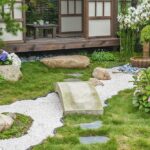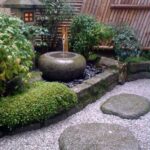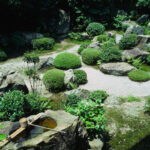Japanese garden design is a traditional form of landscape architecture that has been practiced for centuries in Japan. These meticulously designed gardens are characterized by their peaceful and serene atmosphere, as well as their harmonious blend of natural elements such as water, rocks, plants, and lanterns.
One key aspect of Japanese garden design is the concept of “wabi-sabi,” which celebrates imperfection and impermanence. This philosophy is reflected in the use of natural materials that age gracefully over time, such as weathered stones and moss-covered pathways. The goal is to create a sense of peace and tranquility in the garden, where visitors can escape the stresses of everyday life and connect with nature.
Another important element of Japanese garden design is the use of symbolism and metaphor. Everything in a traditional Japanese garden has a deeper meaning, from the arrangement of rocks to the layout of the pathways. For example, a winding path through a garden may symbolize the journey of life, while a stone lantern placed near a water feature represents enlightenment and spiritual awakening.
Water features are also a common feature in Japanese gardens, as they are believed to have a calming and purifying effect. Ponds, streams, and waterfalls are often incorporated into the design to create a sense of movement and flow. In addition to their aesthetic appeal, water features also serve a practical purpose by providing irrigation and creating a habitat for fish and other aquatic life.
Plants play a vital role in Japanese garden design, with an emphasis on creating a lush, naturalistic landscape that changes with the seasons. Traditional Japanese gardens often feature a variety of native plants, such as cherry blossoms, maple trees, and bamboo, which are carefully selected for their symbolic significance and aesthetic value. Trees and shrubs are meticulously pruned and trimmed to create sculptural shapes that enhance the overall design of the garden.
Overall, Japanese garden design is a unique art form that celebrates the beauty of nature and the simplicity of life. By incorporating elements of wabi-sabi, symbolism, and natural materials, these gardens provide a place of tranquility and reflection for visitors to enjoy. Whether in a small backyard or a large public park, the principles of Japanese garden design can be applied to create a peaceful and harmonious outdoor space for all to appreciate.
















